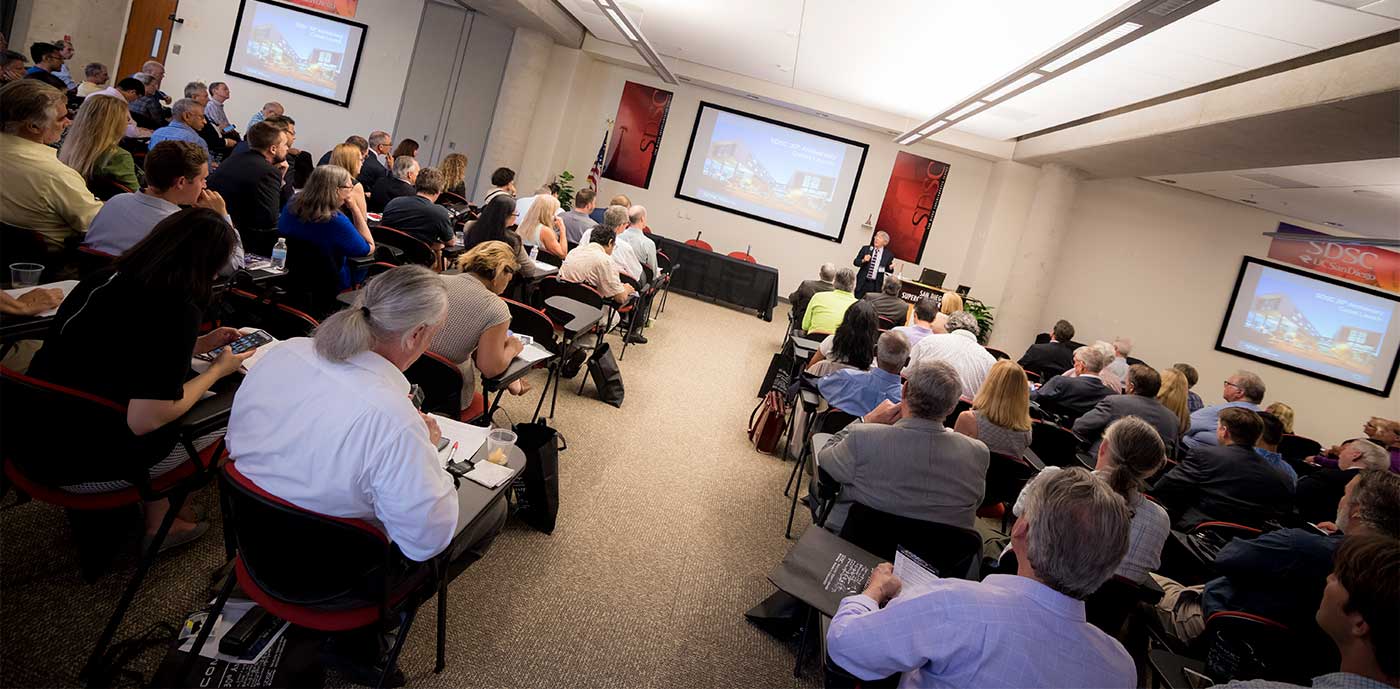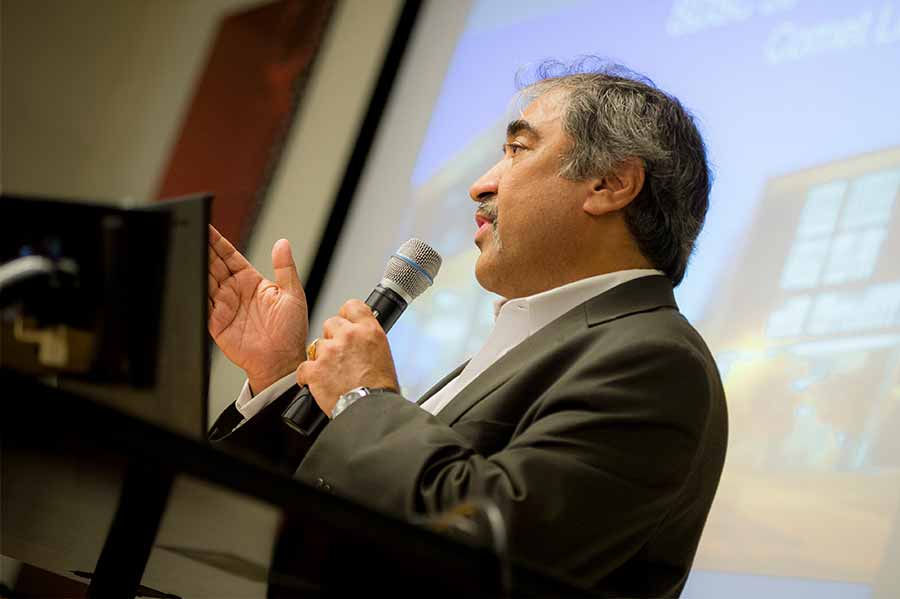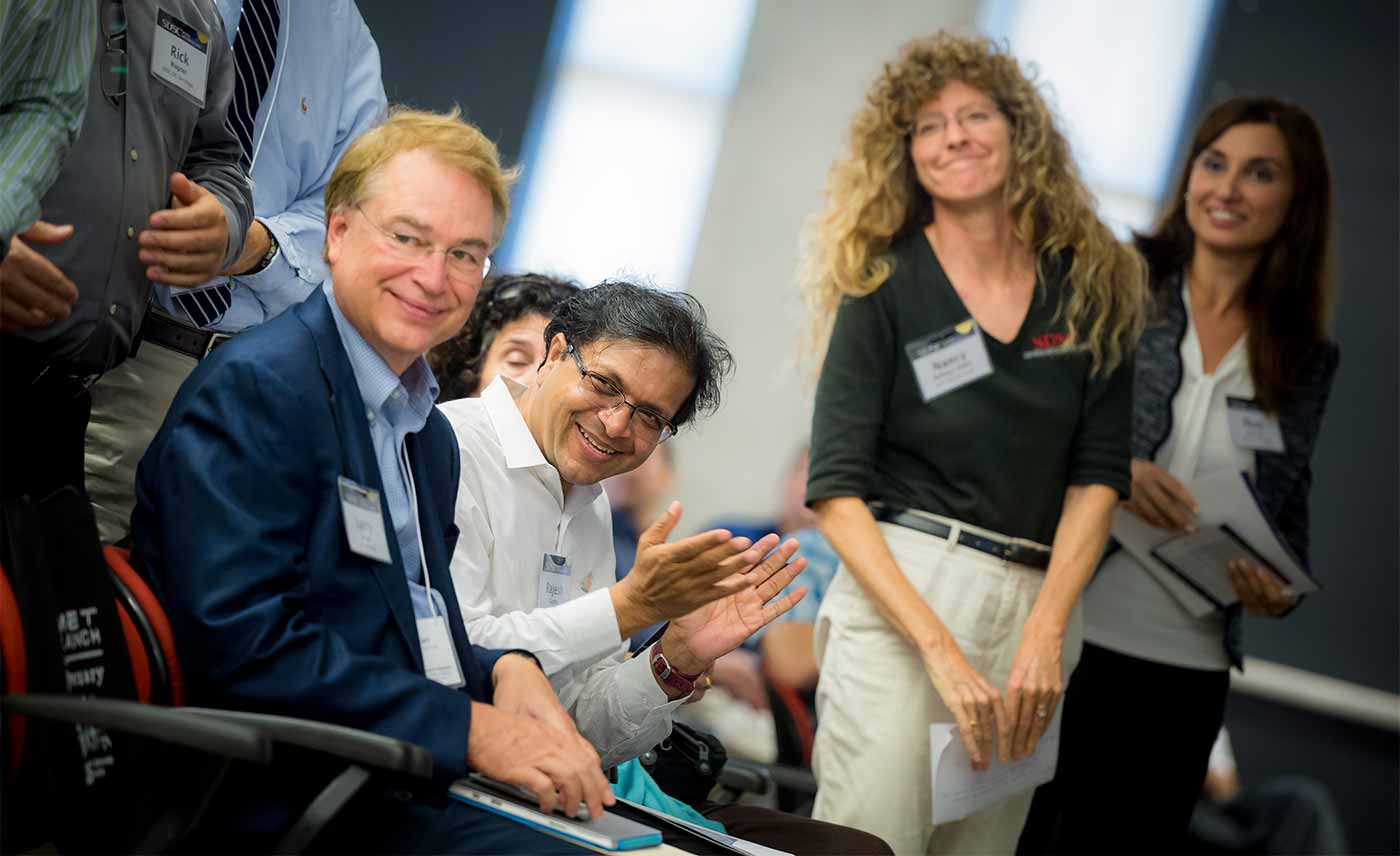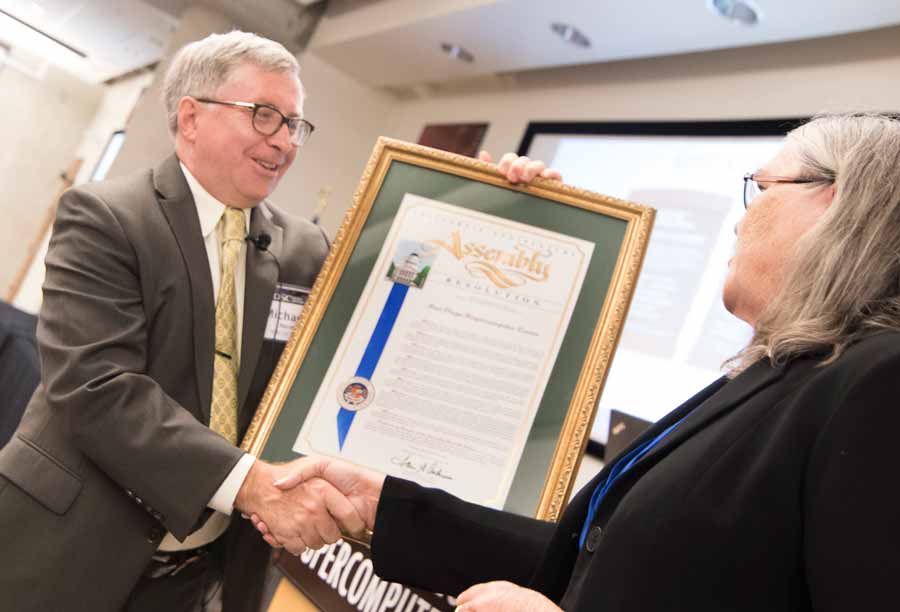
By:
- Jan Zverina
Published Date
By:
- Jan Zverina
Share This:

Photos by Erik Jepsen/UC San Diego Publications
San Diego Supercomputer Center Launches ‘Comet’ Supercomputer to Serve ‘Long Tail’ of Science
When the San Diego Supercomputer Center launched its first supercomputer, a Cray XMP-48 in late 1985, it was about as powerful as an iPhone is today. Last week, the UC San Diego center formally took the wraps off of “Comet” a new petascale supercomputer that is over 2 million times more powerful, according to SDSC Director Michael Norman.

With the ability to perform almost two million billion operations or calculations per second, Comet is designed to transform scientific research by expanding computational access to a larger number of researchers working across a wider range of domains.
“The San Diego Supercomputer Center plays a vital role in fulfilling our vision to solve our world’s most pressing research challenges,” UC San Diego Chancellor Pradeep K. Khosla told a capacity audience at SDSC as the center showcased Comet as part of its 30th anniversary celebration.
During the Oct. 14 event, Chancellor Khosla spoke about how SDSC has become a national leader in cyberinfrastructure, providing the high-performance computing, storage, networking, and expertise needed to harness the university’s collective research efforts efficiently and seamlessly. He also emphasized SDSC’s role in advancing UC San Diego’s Strategic Plan goals and research endeavors.
“Today, UC San Diego is a $1 billion research enterprise,” noted Khosla, adding that “SDSC has been a trail blazer for academic computing.”
“We are fortunate that SDSC has been one of the national leaders – research-oriented pioneers – in building an advanced cyberinfrastructure ‘nervous system’ for the academic and scientific communities,” said UC San Diego Vice Chancellor for Research Sandra A. Brown, another featured speaker at the event.
The result of a National Science Foundation grant valued at almost $24 million including hardware and operating funds, Comet is designed to meet the needs of what is often referred to as the ‘long tail’ of science – the idea that the large number of modest-sized computationally-based research projects represent, in aggregate, a tremendous amount of research that can yield scientific advances and discovery. A video about Comet can be viewed here.
Comet joins SDSC’s Gordon supercomputer as another key resource within the NSF’s XSEDE (eXtreme Science and Engineering Discovery Environment) program, which comprises the most advanced collection of integrated digital resources and services in the world for use by U.S.-based academic researchers.
“The launch of Comet marks yet another stage in SDSC’s leadership in the national cyberinfrastructure ecosystem,” said James Kurose, Assistant Director of the NSF’s Computer and Information Science and Engineering (CISE) Directorate, in remarks at the SDSC event. “Through this launch and the extraordinary computing capabilities of SDSC, the center will continue to expand the frontiers of science and engineering, allowing researchers to open new windows into phenomena as vast as the Universe and as small as nanoparticles.”

From left to right, Calit2 Founding Director Larry Smarr, Jacobs School of Engineering Computer Science and Engineering Chair Rajesh Gupta, SDSC Associate Director Nancy Wilkins-Diehr, and SDSC Chief Data Science Officer Ilkay Altintas.
SDSC Director Michael Norman noted that SDSC’s mission has expanded over the three decades to encompass much more than advanced computation, including a host of services related to the voluminous amount of digitally based information generated daily, and systems designed to analyze, store, and share that data.
“In recent years the research community has moved into a new era of scientific endeavor based on computational science, now best described as data-intensive science,” said Norman. “The term ‘big data’ became the short-hand description for this, or, for academia, ‘data science and engineering.’ This convergence of computational science with data science and engineering rests on an inherent reliance of interdisciplinary collaborations, which is needed to solve the grand research challenges of our times.”

SDSC Director Michael Norman accepts a Proclamation from Deanna Spehn, Special Assistant to California State Assembly Speaker Toni Atkins.
“Comet’s innovative design makes it ideal for supporting a broad range of research and computing modalities. Two distinctive features – support for science gateways, and high-performance virtualization – will significantly expand the community of researchers with access to high-performance computing resources,” said SDSC Deputy Director Shawn Strande, who also is Comet’s program manager. “Comet is expected to reach an active research community of over 10,000 users, and is destined to become one of the most productive HPC systems available to the academic research community.”
Share This:
You May Also Like
Stay in the Know
Keep up with all the latest from UC San Diego. Subscribe to the newsletter today.


